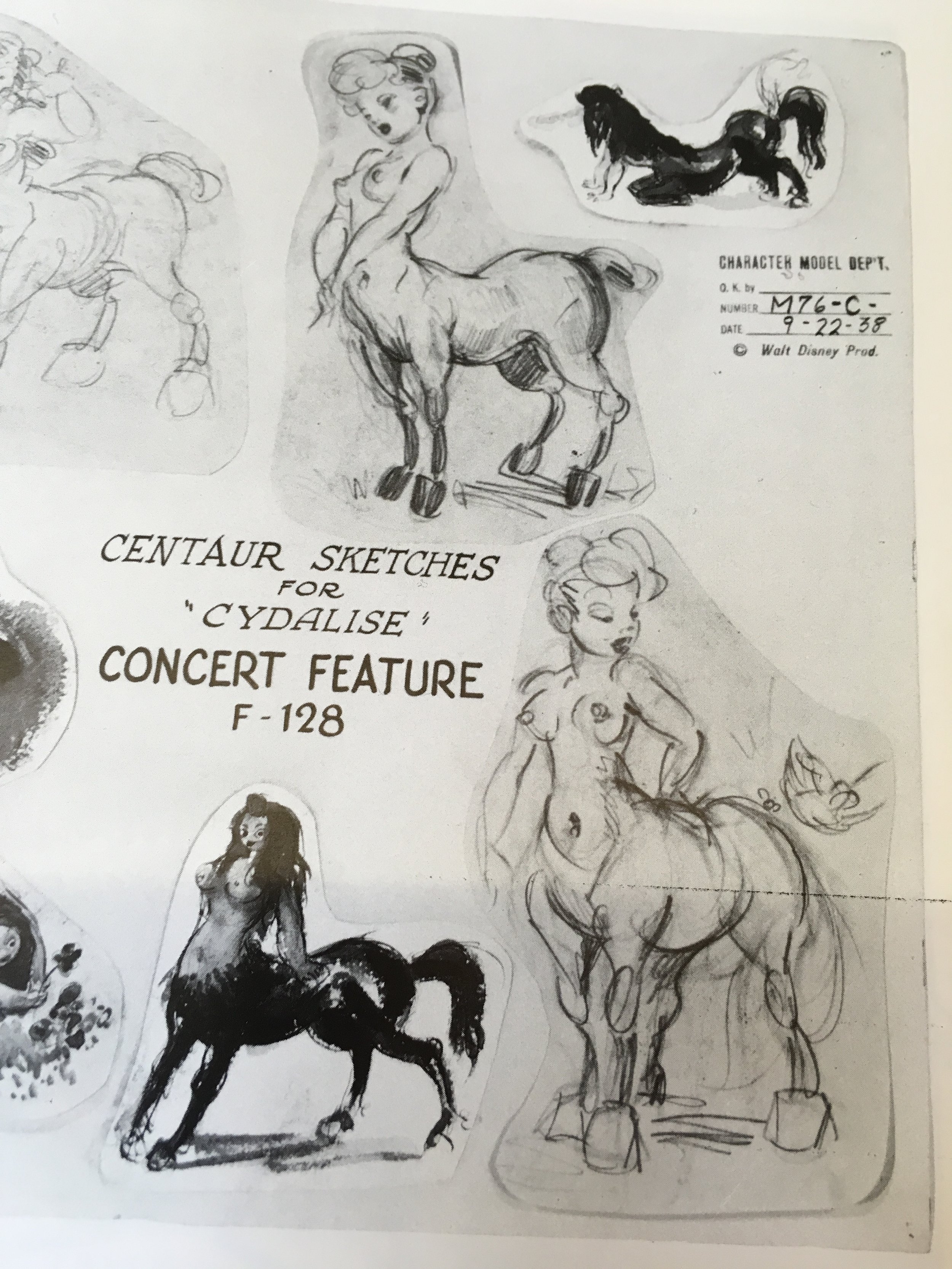[Field Notes] Considering Fantasia
Some sexy early renditions of lady centaurs. The company couldn't decide on a name for the movie for quite awhile, so they referred to it as 'The Concert Feature'.
I don’t know why I hadn’t considered how the 1940 movie Fantasia fits into synaesthetic discourse before this weekend.
Probably the whiff of Naziism and cryogenics I tend to associate with Walt Disney has influenced the space I make for him in my brain. Maybe the word ‘Fantasia’ has always felt a little bit grandiose and a little bit absurd, and maybe I can be a bit of a snob. For whatever reason, I really hadn’t given it much thought until now.
I probably wouldn’t have even considered it at all, except that I stumbled upon it when doing some cursory research on Smell-o-vision . Apparently, Walt Disney wanted to use smells in showings of Fantasia, but the idea was scrapped because of budget concerns. Considering the audaciousness of Disney’s visions that were brought to life, I see great loveliness in these ideas that were so grand that they had to be abandoned. Those are the ones we should be taking the most note of, I think.
As the Executive Director of Bait/Switch, I strictly cannot participate in the project because I know too much about where everything is coming from. So it seems that with one window closed off by a thin screen so as not to affect the purity of the work within the art web, the project (and I do think about Bait/Switch as a kind of ethereal living entity) has opened a new channel and has begun to offer me prompts of my own. They just happen to take the form of research prompts. And I am a sucker for a research prompt.
The hunt for information about Fantasia was a gorgeous excuse to go to that temple of everything- the library. There is such a palpable, beautiful intentionality in the feeling of walking into a library in order to do research purely to satisfy your own curiosity. Here in Boston, the glory has an extra layer of stupendousness by the fact that our library is edged in wrought iron filigree and filled with John Singer Sargent murals. I mean, come on.
In 1937, Walt Disney spotted the conductor Leopold Stokowski at a restaurant where both men were apparently dining alone, and called over to him that they should sit together. [Of course I have so many questions here that will forever go unanswered (i.e. what were they eating?!)]. They hit it off, and decided that they wanted to collaborate on something, and it seems that’s where Fantasia started.
In a letter, Disney said that he was “all steamed up” over the idea of working with Stokowski. Reading that the creator of Mickey Mouse was getting all hot and bothered over the idea of working with a famous conductor made me feel something unexpected. Despite all of the weird shit that is known about Disney, this little glimpse into his aching creative heart makes me feel strangely close to him. Hell, if a famous conductor agreed to work with me on a project, I would be feeling that same ants-in-the-pants feeling myself. Just reading about it kinda makes me feel it anyway.
Conductor Leopold Stokowski visiting the Disney paint lab. Yes, the paint lab.
There is electricity coursing through everything related to the making of Fantasia- it seems that everyone involved was stretching creatively and taking exciting risks. Walt Disney employed a stenographer to take careful notes of his meetings, so there are a lot of amazing conversations that have been preserved for our consideration. For example, during planning for the final scene someone said he wondered “if we’re taking full advantage of the cartoon medium, with a picture like this.” To which Disney responded “This is not ‘the cartoon medium’. It should not be limited to cartoons. We have worlds to conquer here.”
Another gem comes from Stokowski. Someone was trying to talk about what precedent there was for a decision, and he said “You can’t compare this with anything. Don’t think in the past tense, think in the future tense.”
Dummy musicians used for shadows during the live action parts of the movie.
Otis Ferguson (quoted in Culhane, 1983:43) wrote that the film “is the only excuse I have ever seen for having eyes and ears at the same time.” Reading about these intense people wrestling with their senses to create a synaesthetic experience (although I don’t think they would use that word) is inspiring and exciting. What can we learn from them as we continue to consider ways to display and present this project? What other strange things did they learn as they wandered into the space in between music and animation? Excuse me, I have more research to do.
Sources:
Finch, Christopher. The Art of Walt Disney. H.N. Abrams: 1995
Culhane, John. Walt Disney’s Fantasia. H.N Abrams: 1983
Wikipedia. 'Fantasia' . https://en.wikipedia.org/wiki/Fantasia_(1940_film). Accessed 8.25.2018



